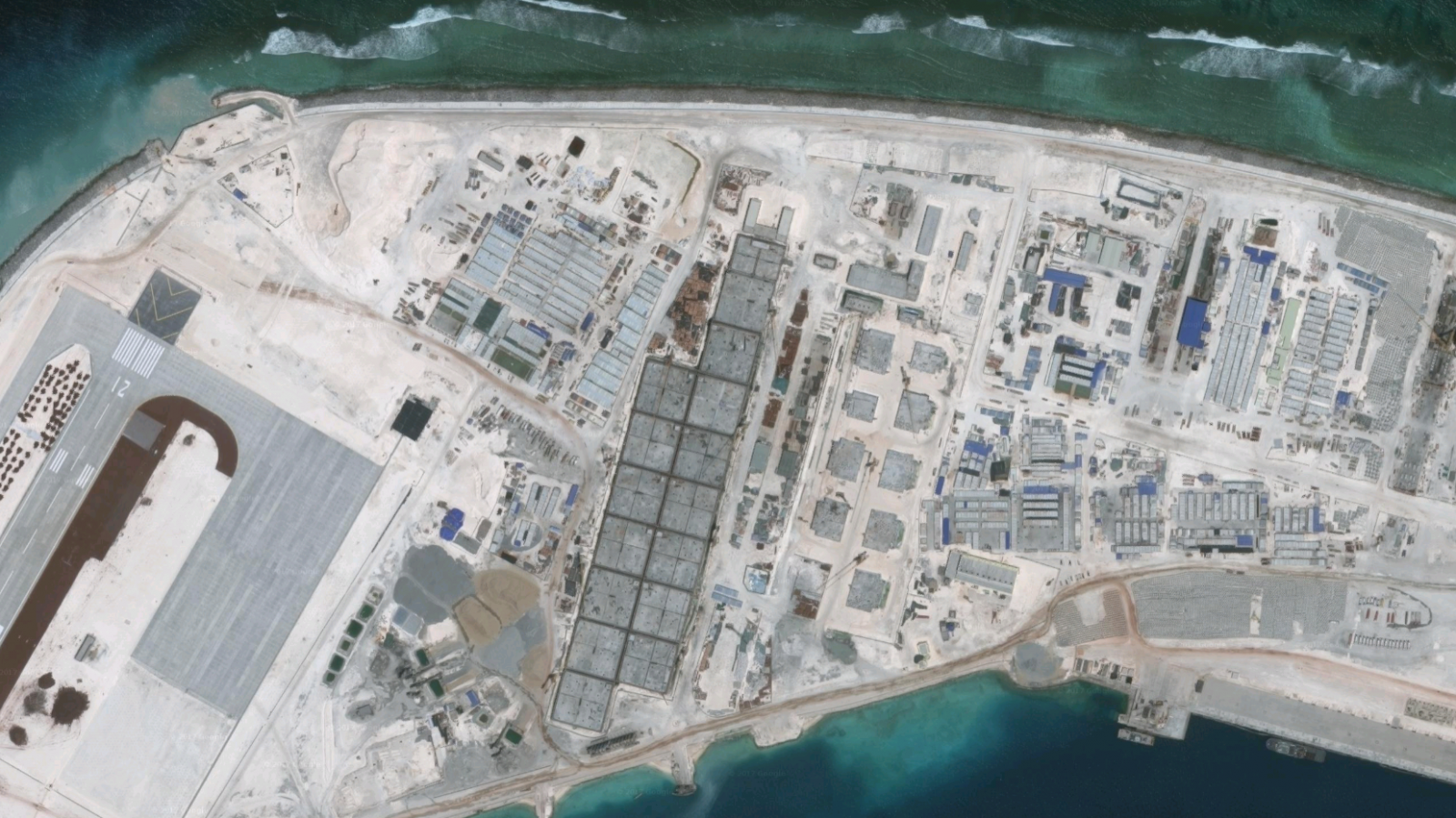USS McCain Transits Near China's Mischief Reef Base

On Thursday, the destroyer USS John S. McCain spent six hours within 12 nm of Chinese-occupied Mischief Reef, an artificial island in the South Chinda Sea.
In recent years China has built up Mischief and other disputed land features in the Spratly Island chain into forward bases, complete with military runways, fortified hangars and air defense installations. China maintains that they are for civilian purposes.
China says that the waters around the land features it occupies are its own territorial seas, consistent with its sweeping "nine-dash line" claim to most of the South China Sea. The Permanent Court of Arbitration in the Hague ruled against these claims last year, but China has largely ignored its findings.
The U.S. Navy regularly conducts Freedom of Navigation operations (FONOPS) near Chinese-occupied islands, and in many other locations around the world. A transit by USS Dewey near Mischief Reef earlier this year also involved a man-overboard drill; this might appear trivial, but it falls into a category of actions that are not permitted during innocent passage through territorial seas. By disregarding limitations for territorial seas, the operation was intended to demonstrate that the waters near Mischief are not Chinese.
On Thursday, USS McCain made this assertion explicitly. According to an American official, Chinese forces called the McCain, asking her to leave "our waters." USS McCain responded that "we are a U.S. [vessel] conducting routine operations in international waters."
Beijing quickly expressed its displeasure with the transit. “The US destroyer’s actions have violated Chinese and international laws [and] severely harmed China’s sovereignty and security," the Chinese Foreign Ministry said in a statement. “China is very displeased with this and will bring up the issue with the US side.” The Chinese Ministry of Defense added that "US military provocation will only encourage the Chinese army to further strengthen defense capacity building.”
The new FONOPS transit comes at a time of high regional tensions: North Korea's nuclear and missile programs have progressed rapidly in recent months, and President Donald Trump has begun trading threats with Pyongyang over the possibility of a nuclear strike. Trump has blamed China for failing to curb North Korea's nuclear ambitions; for its part, China has warned the U.S. that it will defend North Korea if the United States attempts to change the regime in Pyongyang.
